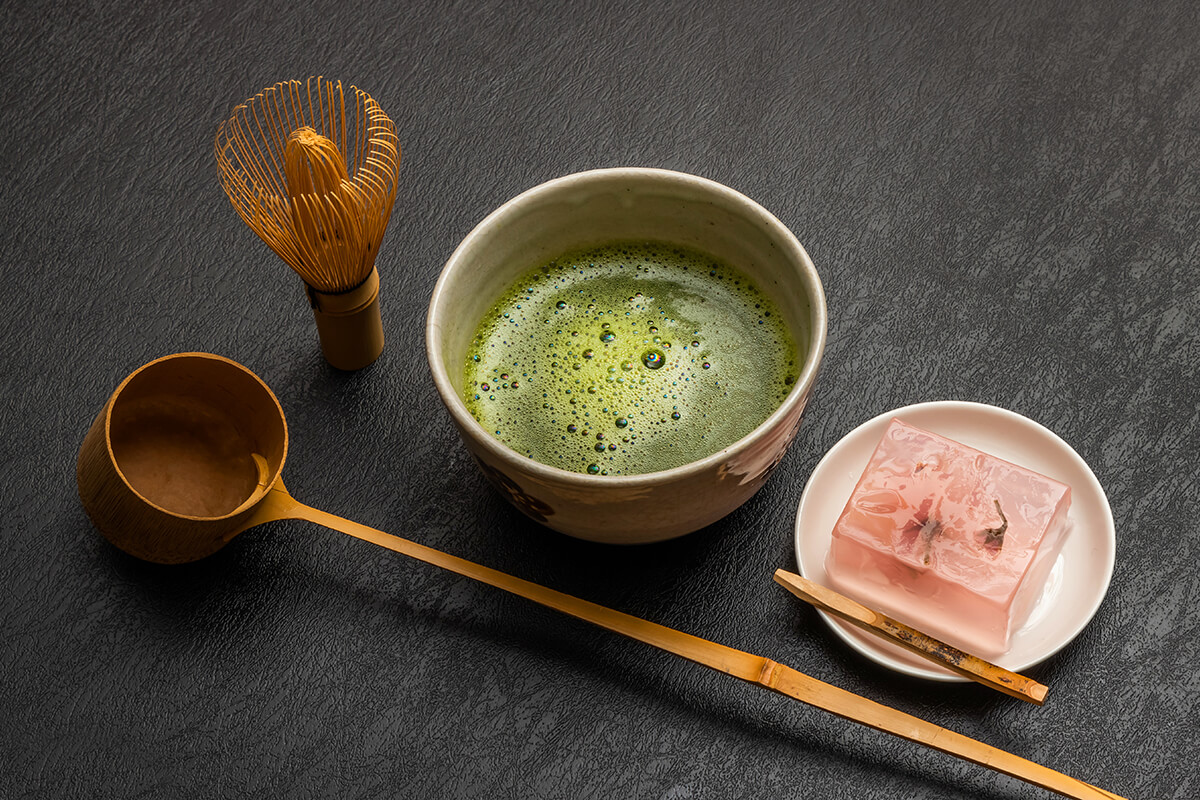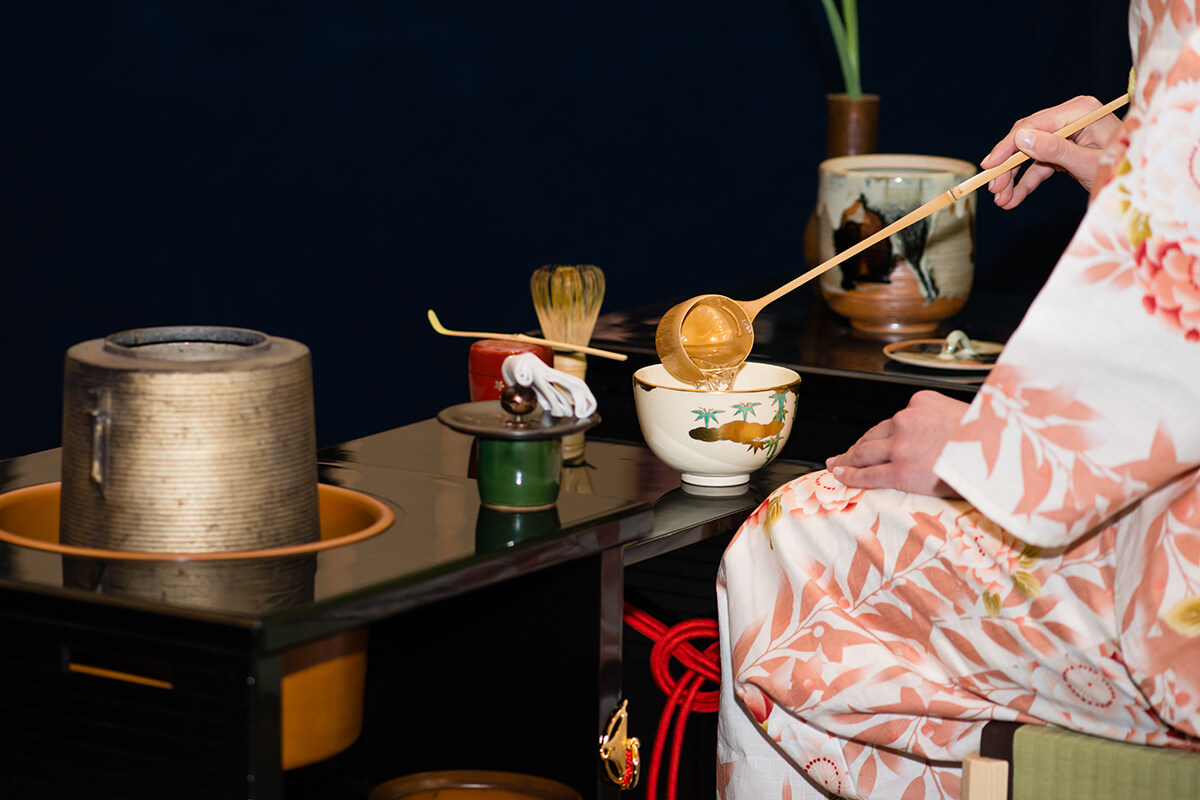TEA TOURISM

The Japanese elevate the act of drinking tea to an art form. The elaborate and refined tea ceremony (called sadou, meaning “the way of tea”) includes infusing powdered tea or tea leaves with boiling water and eating wagashi (small, lovely, hyper-seasonal Japanese sweets that enhance the flavor of the tea). The traditional tea ceremony venue is surrounded by a garden that is deliberately kept tranquil and simple to encourage a calm spirit. A path of carefully laid stones leads to the teahouse entrance, where a stone basin allows visitors to wash their hands before entering the tearoom.
When green tea was first brought to Japan by the founder of Zen Buddhism, it was something so precious that only monks, shoguns, and the Imperial Family could afford it. Even when it became widely available, tea and the way to enjoy it remained special.
A full, formal tea event (chaji) is a multihour affair that begins with an elaborate and highly structured kaiseki meal, followed by a bowl of thick tea that is followed by a bowl of thin tea. However, most tea gatherings (chakai) today are much simpler, including wagashi, a bowl or two of thin tea and, perhaps, a light meal.
Throughout the country, numerous temples, traditional Japanese gardens, and even hotels employ trained tea masters who prepare and serve perfect bowls of matcha paired with a small wagashi. In Tokyo’s central Shinjuku Gyoen National Garden, two traditional teahouses offer food and drink alongside a guided meditative experience; the journey’s phases include harmony, respect, purity, and serenity. For example, when presented with a bowl of tea, a guest should reflect upon the warmth of the bowl and the color of the bright green matcha against the clay before he begins to drink.

In Kyoto, the ancient capital that is still the center of Japan’s traditional culture, a few temples offer (by appointment) time-honored versions of the tea ceremony. Ninna-ji temple offers an authentic experience in a 250-year-old teahouse that was once the private residence of famed painter Ogata Korin (1658–1716) and his brother Ogata Kenzan (a potter). The ceramics made by the brothers became the basis for a ceramic style associated with Kyoto. Some of the objects they made are still used in the temple’s tea ceremony. Daitoku-ji, a Zen temple, is associated with the famous tea master Sen no Rikyū (1522–1591), who is revered as the greatest Japanese tea master. Visitors are welcomed by a monk who conducts the tea ceremony and discusses the principles of Zen, such as the present-moment awareness embodied in the 16th-century Japanese proverb ichi-go ichi-e (very roughly translated as “every moment should be highly treasured because it will never occur again”).
A new kind of tea tourism—similar to California wine country’s vineyard tours and tasting rooms—is becoming popular not only with visitors but also with residents. In Kyushu, picturesque, 500-year-old plantations have tea butlers and tea tastings with tea masters, but also offer face time with local growers, tea and food pairings, and meditative walking or cycling journeys through verdant tea fields.
To arrange a traditional tea ceremony in Kyoto: weft-hospitality.com
To arrange a tea tasting with a tea butler in Kyushu: tea-tourism.com
To arrange a tea-centric tour of Japan: goldbergontravel.com